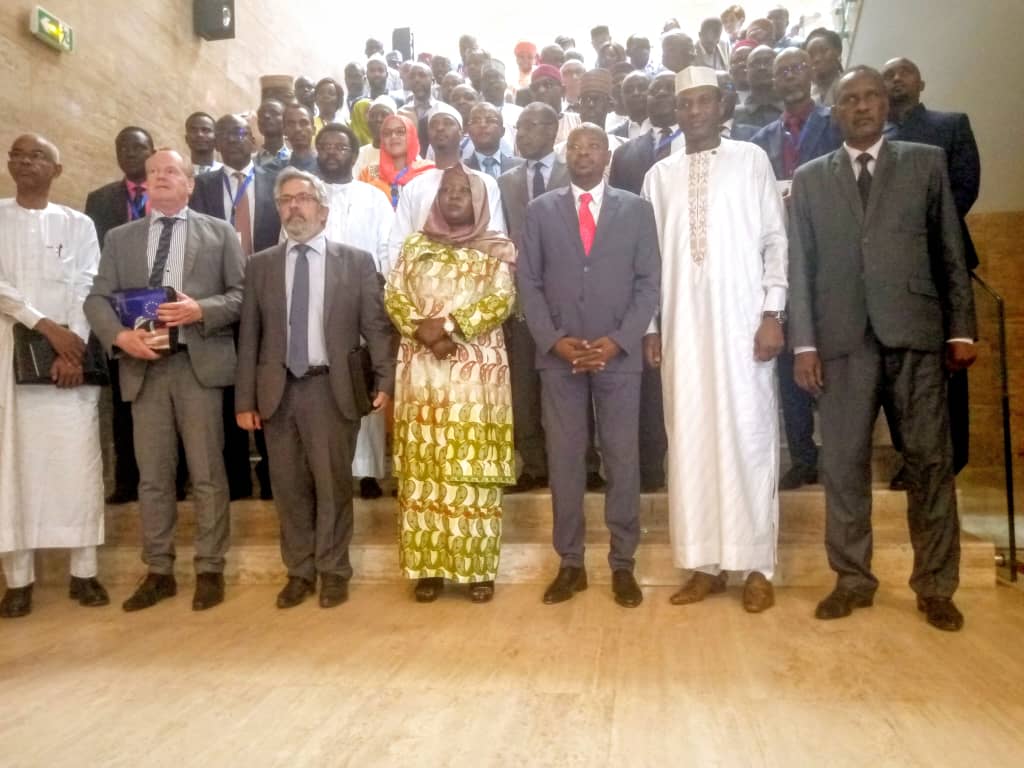Global Cities Under Siege: The Devastating Effects Of Dangerous Climate Whiplash

Table of Contents
Infrastructure Breakdown: How Climate Whiplash Damages Urban Systems
Climate whiplash relentlessly attacks the intricate network of urban infrastructure. The rapid succession of extreme weather events overwhelms systems designed for predictable conditions, leading to widespread damage and disruption.
Extreme Weather Events and Infrastructure Failure:
Urban infrastructure – roads, bridges, power grids, water systems, and transportation networks – is incredibly vulnerable to the violent swings of climate whiplash. Floods can inundate subways and cripple transportation, while heatwaves can overload power grids and cause widespread blackouts. Droughts can lead to water shortages and wildfires, destroying critical infrastructure and creating dangerous conditions.
- Examples: New Orleans' vulnerability to hurricanes, highlighting the failure of levees during Hurricane Katrina; Mumbai's struggle with monsoon flooding, causing widespread transportation disruptions; California's wildfires damaging power lines and disrupting electricity supply.
- Economic Costs: The financial burden of repairing and replacing damaged infrastructure is astronomical. Billions of dollars are spent annually on disaster relief and rebuilding efforts, placing a significant strain on city budgets. This includes:
- Cost of repairing damaged roads and bridges.
- Cost of replacing damaged power grids and water systems.
- Cost of relocating essential services.
Disrupted Services and Public Safety:
Infrastructure failures directly impact essential services. Power outages disrupt healthcare facilities, water shortages impact sanitation, and transportation breakdowns hinder emergency response. This heightened vulnerability creates a dangerous situation for residents.
- Public Safety Risks: Extreme weather events can lead to increased crime rates due to displacement and resource scarcity. The disruption of emergency services during and after extreme weather events increases casualties and worsens the impact of disasters.
- Social Consequences: Climate whiplash contributes to social inequality, disproportionately affecting vulnerable populations. Displacement from damaged homes, lack of access to healthcare and essential services, and increased food insecurity contribute to serious social unrest and long-term health problems.
Economic Impacts: The High Cost of Climate Whiplash on Global Cities
The economic consequences of dangerous climate whiplash are far-reaching and devastating. The rapid succession of extreme weather events causes significant damage to businesses, disrupts supply chains, and places a heavy burden on city finances.
Damage to Businesses and Property:
Businesses, particularly small and medium-sized enterprises (SMEs), are often the first to suffer from climate whiplash. Floods, fires, and storms can destroy property, disrupt operations, and lead to significant financial losses. The tourism industry, agriculture, and manufacturing are particularly vulnerable.
- Impact on Employment: Business closures and disruptions lead to job losses and economic hardship for individuals and families. The ripple effect on local economies can be severe.
- Insurance Costs: The rising costs of insurance premiums reflect the increasing risk associated with climate whiplash. Many businesses struggle to secure adequate insurance coverage.
Increased Costs for Climate Adaptation and Mitigation:
Cities are forced to invest heavily in climate adaptation and mitigation strategies to protect themselves from the devastating effects of climate whiplash. This includes building seawalls, improving drainage systems, developing early warning systems, and investing in renewable energy sources.
- Financial Burden: These investments place a considerable financial burden on city governments and taxpayers. There are often difficult trade-offs to be made between investing in adaptation measures and other essential city services.
- Long-term Planning: Effective long-term planning and investment in sustainable urban development are crucial for building resilient cities that can withstand the impacts of climate whiplash.
Social and Human Costs: Climate Whiplash and the Displacement of Populations
Beyond economic considerations, dangerous climate whiplash has profound social and human costs, particularly regarding displacement and health impacts.
Displacement and Migration:
Extreme weather events, sea-level rise, and other climate-related disasters are leading to increased displacement and migration. People are forced to leave their homes and communities, often with little or no warning.
- Loss of Livelihoods: Displacement results in the loss of homes, livelihoods, and social networks. Climate migrants face significant challenges in integrating into new communities.
- Vulnerable Populations: The impact of displacement disproportionately affects vulnerable populations, including the elderly, children, and low-income communities.
Health Impacts:
Climate whiplash poses significant threats to public health. Heatwaves lead to heat stroke and respiratory illnesses, while floods can cause waterborne diseases. The disruption of healthcare services exacerbates these issues.
- Increased Strain on Healthcare Systems: Extreme weather events place an immense strain on healthcare systems, diverting resources and personnel away from routine care.
- Health Inequality: The health impacts of climate whiplash are not evenly distributed. Vulnerable populations often experience the most severe health consequences.
Addressing the Siege on Global Cities: A Call to Action
Climate whiplash is inflicting devastating damage on global cities, impacting infrastructure, economies, and the lives of millions. The urgency of the situation demands immediate and comprehensive action. We must invest in climate-resilient infrastructure, develop effective adaptation strategies, and drastically reduce greenhouse gas emissions to mitigate the severity of future climate whiplash events. Learn more about climate whiplash, support sustainable urban development initiatives in your community, and advocate for stronger climate action at all levels of government. The future of our global cities depends on it. Let's work together to build more resilient and sustainable cities and mitigate the dangers of climate whiplash.

Featured Posts
-
 Analysis Of Attack Mailers In Bethlehems Mayoral And Councilwoman Elections
May 28, 2025
Analysis Of Attack Mailers In Bethlehems Mayoral And Councilwoman Elections
May 28, 2025 -
 Las Vegas To Host American Music Awards With Jennifer Lopez
May 28, 2025
Las Vegas To Host American Music Awards With Jennifer Lopez
May 28, 2025 -
 Legal Battle Justin Baldonis Lawyer Counters Blake Livelys Motion
May 28, 2025
Legal Battle Justin Baldonis Lawyer Counters Blake Livelys Motion
May 28, 2025 -
 Discover The Shop Where A Winning Lotto Ticket Was Sold Claim Your Fortune
May 28, 2025
Discover The Shop Where A Winning Lotto Ticket Was Sold Claim Your Fortune
May 28, 2025 -
 Hailee Steinfeld Premium Beers Group And The Angel Margarita A Perfect Pairing
May 28, 2025
Hailee Steinfeld Premium Beers Group And The Angel Margarita A Perfect Pairing
May 28, 2025
Latest Posts
-
 L Ingenierie Castor En Drome Observations Sur Deux Cours D Eau
May 31, 2025
L Ingenierie Castor En Drome Observations Sur Deux Cours D Eau
May 31, 2025 -
 Evaluation De L Ingenierie Castor Dans La Drome Une Comparaison De Deux Sites
May 31, 2025
Evaluation De L Ingenierie Castor Dans La Drome Une Comparaison De Deux Sites
May 31, 2025 -
 Analyse De L Impact Des Travaux D Ingenierie Castor Sur Deux Cours D Eau De La Drome
May 31, 2025
Analyse De L Impact Des Travaux D Ingenierie Castor Sur Deux Cours D Eau De La Drome
May 31, 2025 -
 Evaluation De Deux Projets D Ingenierie Castor En Drome
May 31, 2025
Evaluation De Deux Projets D Ingenierie Castor En Drome
May 31, 2025 -
 L Ingenierie Des Castors En Drome Observations Sur Deux Sites
May 31, 2025
L Ingenierie Des Castors En Drome Observations Sur Deux Sites
May 31, 2025
